| |
|
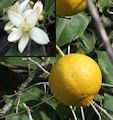 | |
| MaltaWildPlants.com by Stephen Mifsud |

|
| |
|
|
 |  |  |  |
| External Links: |
|
Senecio vulgaris (Common Groundsel) |
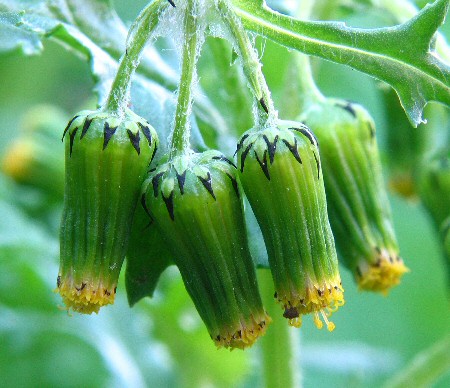
Senecio vulgaris (ASTERACEAE.)
Images for this profile are taken from the Maltese Islands after year 2000. |
|
| Nomenclature |
Species name : | Senecio vulgaris L. | Authority : | Carl von Linne, Sweden, (1707 - 1778) | Synonyms :
(basionym or principal syn.) |
|
Plant Family : | Asteraceae Bercht. & J.Presl (= Compositae )
(Daisy or Sunflower Family) | English name(s) : | Common Groundsel, Old-man-in-the-Spring | Maltese name(s) : | Kubrita, Ħaxixa tal-kanali | Status for Malta : | Indigenous. Present on the Maltese islands before man | Name Derivation : |
Senecio: from senex meaning old man for the possession of hairy parts in flower bracts, becoming more evident when fruiting. (Latin origin ); 2 = from "Senex" meaning old man referring to hairy parts of flowers, stalks and seeds. (Latin).
vulgaris: common and widespread, at least when this plant was described. (Latin origin ); 2 = Common, ordinary. (Latin).
| Remarks : | |
|
| Morphology and structure |
PLANT STRUCTURE: |
Character | Growth Form | Branching | Surface |
Description | | | |
General
Picture |  | 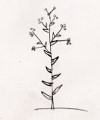 | 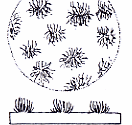 |
|
LEAVES: |
Character | Arrangement | Attachment | Venation |
Description | | | |
General
Picture |  |  |  |
| |
Character | Leaf Shape | Leaf Margin | Remarks |
Description | | | |
General
Picture |  |  |  |
|
FLOWERS: |
Character | Colour | Basic Flower Type | No. of Petals | No. of Sepals |
Description | Yellow (and green) The involucre is green while the florets are yellow. | | 0 | 24-32 Referring to the phyllaries of the involucre. |
General
Picture | |  |  |  |
| |
Character | Inflorescence | Description | Ovary | Stamens |
Description | | Cylindrical green involucre composed of 2 layers of narrow phyllaries each having a pointed black tip. The involucre is topped with yellow disc florets. Ray-florets (petals) are absent. | | |
General
Picture | 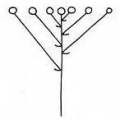 |  |  | 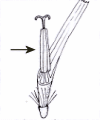 |
| |
Character | Scent | Average Flower Size | Pollen Colour | Other Notes |
Description | None | 8mm x 5mm | Yellow | - |
|
SEEDS: |
Character | No. Per Fruit | Shape | Size | Colour |
Description | 30 - 50 Seeds closely packed on a common receptacle. | | 2mm (excluding pappus). | Grey - Light Brown Covered with very fine, wool-like white bristles. |
General
Picture |  |  |  |  |
|
FRUIT AND OTHER BOTANICAL DATA: |
Character | Fruit Type | Colour of Fruit | Subterranean Parts | Other Notes |
Description | | White (Referring to the pappi of the collective fruit head). | | - |
General
Picture | 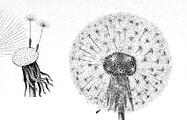 |  |  |  |
|
|
| Plant description and characters | |
Life Cycle: | Annual. |
Growth Form: | THEROPHYTE (annual plants, herbaceous) |
Habitat: | Quite ruderal and cosmopolitan, found mostly in roadsides, pathways, wasteland, cultivated areas in urban places (e.g.. traffic islands). It can be also found in the wild at/near disturbed areas |
Frequency: | Common |
Localities in Malta: | Common but not abundant. Located near Gnien il-Haddiem in Dingli. Also present in pathways and waste land in Santa Venera, Girgenti, Qormi and Luqa. |
Plant Height: | 10-30cm. |
| Nov-May |
Protection in Malta: | Not legally protected till the last update of this website (2/Mar/2022) |
Red List 1989: | Not listed in the Red Data Book of the Maltese Islands |
Poison: | |
This herbaceous and rather low plant have an erect stem of about 20cm in length with few irregular branches mostly present at the inflorescences part. The stem, leaves and to a larger extent the flower stalks have white, wool-like hairs also referred to as floccose hairs.
The stem produces several sessile, alternate leaves. Each leaf have a pinnately lobed or coarse toothed blade and the entire outline is dentate. Leaves possess 2 small auricles at their base clasping the stem and have sparse, fine, long bristles mostly found at the upper and central part.
The inflorescence is rather corymb-like with groups of 5-12 individual flowers that have stalks coming from a common point. The stalks are about 15mm long or shorter and are quite flimsy resulting in drooping or pendulous flowers. There is a considerable number of wool-like bristles around the flower stalks which can resemble a tangled cob web.
The flowers are rayless and hence consists only of a cylindrical green involucre with a flat-topped yellow layer of disk-florets. The most distinctive feature of the flower is the 2 layers of phyllaries forming the involucre. They are narrow with the basal layer being much shorter than the upper layer making most of the involucre. The phyllaries have a characteristical black pointed tips which collectively look like claws or teeth. The black tips of the lower layer are more conspicuous. The yellow disc-florets have an opposite pair of curly stigma which can be seen by the naked eye. No ray-florets (petals) are usually present and hence the flowers are quite inconspicuous.
The fruit consist of a white ball of about 30-50 pappus-bearing achenes which are attached to a common receptacle and when mature they get loose and disperse away by wind. Each achene have a bristly pappus that lacks a beak and the actual seed is linear, ash-grey to brown in colour and covered with fine white bristles. The seed also has longitudinal ribs that can be seen only by a magnifying glass.
|
|
| Information, uses and other details |
Nativity and distribution
Northern Africa: Algeria, Libya, Morocco, Tunisia
Western Asia: Iran
Caucasus: Georgia, Russian Federation, Siberia
Asia: China (n.e.), Korea
Europe: Denmark, Faroe Islands, Finland, Iceland, Ireland, Norway, Sweden, United Kingdom, Austria, Belgium, Czechoslovakia, Germany, Hungary, Netherlands, Poland, Switzerland, Belarus, Estonia, Latvia, Lithuania, Moldova, Ukraine, Albania, Bulgaria, Greece, Italy, Romania, Yugoslavia,France, Portugal, Spain.
[ WWW-26]
Nomenclature
The name Groundsel is of old origin, being derived from the Anglo-Saxon groundeswelge, meaning literally, 'ground swallower,' referring to the rapid way the weed spreads. In Scotland and the north of England it is still in some localities called Grundy Swallow - only a slight corruption of the old form of the word - and is also there called Ground Glutton. In Norfolk it is often called Simson or Sention, which has by some been considered an abbreviation of 'Ascension Plant.' It seems more probable that 'Sention' is a corruption of the Latin, Senecio, derived from Senex (an old man), in reference to its downy head of seeds; 'the flower of this herb hath white hair and when the wind bloweth it away, then it appeareth like a bald-headed man.' [WWW-03]
Occurrence as a Weed
A very common weed throughout Europe and Russian Asia, not extending to the tropics. It is abundant in Britain, being found up to the height of I,600 feet in Northumberland. It grows almost everywhere, and is to be found as frequently on the tops of walls as among all kinds of rubbish and waste ground, but especially in gardens. Groundsel is one of those plants which follows civilized man wherever he settles, for there is hardly a European colony in the world in which it does not spring up upon the newly tilled land, the seeds probably having mingled with the grain which the European takes with him to the foreign country. Other home weeds, such as the thistle, have made their way across the seas in the same manner. [WWW-03]
Groundsel, so well known as a troublesome weed, is connected in the minds of most of us with caged birds, and probably few people are aware that it has any other use except as a favourite food for the canary. And yet in former days, Groundsel was a popular herbal remedy, is still employed in some country districts, and still forms an item in the stock of the modern herbalist, though it is not given a place in the British Pharmacopoeia. [WWW-03]
Toxicity
All parts of the plant are poisonous to many mammals, including humans. The toxin affects the liver and has a cumulative affect [9, 65] . Some mammals, such as rabbits, do not seem to be harmed by the plant, and will often seek it out [4] . Various birds also eat the leaves and seeds [4] .
The toxicity is described as moderat by [WWW-87] . It states that S. vulgaris contains cumulative Pyrrolizidine alkaloids which can cause liver lesions, enlarged liver, abdominal pain, weakness, staggering, and even death. Liver damage is permanent. Usually parts of the plant is eaten by livestock when it gets in hay or when wilted. Drying or storage doesn't destroy toxins. [WWW-87]
This plant contains pyrrolizidine alkaloids, which cause irreversible liver damage after chronic exposure. Cattle and horses have died after ingesting common groundsel. Humans use this plant in teas and herbal remedies in some parts of the world. Death occurred after some species of the genus Senecio were ingested. Humans should not ingest foods that contain any plant material from this genus. In a case of prenatal exposure, a mother ingested tea containing an estimated 0.343 mg of senecionine, resulting in fatal veno-occlusive disease in a newborn infant. [WWW-86]
The highest concentration of pyrrolizidine alkaloids is found in the flowers and the lowest in the roots. The amount of toxin increases in the leaves, reaching a maximum just before flower maturity. Senecionine, a pyrrolizidine alkaloid, is the principal toxin of common groundsel. A total of less than 1% alkaloids was measured. [WWW-86]
Pyrrolizidine alkaloids are the principal toxins in senecios. The quantity of alkaloid in Senecio spp. varies with the species and stage of growth, the young pre- flowering plant being most toxic. Acute liver necrosis and death in 1 to 2 days has been associated with feeding cattle 4 to 8 percent of an animal's body weight in green plant over a few days. Chronic poisoning, which is the more natural form of poisoning encountered in cattle and horses, is usually associated with ingestion of smaller quantities of Senecio over a period of 3 weeks or more. Cattle fed 1.5 g of S. jacobaea/kg of body weight daily for a minimum of 20 days had 100 percent mortality. This equates to a 20-day cumulative dose of 2 percent of an animal's body weight of dry plants. The cumulative effects of PAs on the liver may take 6 or more months to reach the point where 80 percent or more of the liver is affected and clinical signs of liver disease become evident. [WWW-88]
For a much detailed and comprehensive information about Senecio vulgaris toxicity, please click here. This fact file is compiled by IPCS INTOX Databank.
Poisoning in Cattle
General symptoms of poisoning include:
Blindness
Incoordination
Cirrhosis of liver
Prostration
Death
Cattle were poisoned after ingesting common groundsel. In some cases, calves 3-8 months old died, whereas older cows showed no clinical signs. Calves from cows eating contaminated hay during pregnancy died the following autumn. The same effects were obtained experimentally from the offspring of rats fed the toxins during pregnancy. Other symptoms include nervousness, incoordination, pushing against objects, walking in circles, and blindness with glazed eyes. [WWW-86]
Poisoning in Horses
General symptoms of poisoning include:
Anorexia
Ataxia
Epression
Diarrhea
Hemoglobinuria
Cirrhosis of liver
Death
Ingesting common groundsel leads to sickness and death. Early symptoms include anorexia and listlessness. Animal owners do not usually notice problems until liver damage occurs. Experimental tests show that routine measurement of food intake and weekly body weight can alert owners to pyrrolizidine poisoning early enough so that liver damage can be reduced. Measuring the serum bile acid is the best way to predict animal survival. Liver damage was induced in horses after they ingested an average of 233 +/- 9.2 mg of pyrrolizidine alkaloid per kilogram of body weight. Other symptoms include ataxia, head pressing, and stall walking. Megalocytic hepatopathy develops. Liver damage is often severe before obvious clinical signs develop. [WWW-86]
Poisoning in Humans
General symptoms of poisoning is mostly Cirrhosis of liver
Common groundsel is used in herbal medicine and teas around the world. Humans should not ingest any foods, teas, or remedies that contain any plant material from the genus Senecio. Chronic poisoning occurs, resulting in veno-occlusive disease in children and Budd-Chiari syndrome (more commonly) in adults
[WWW-86]
Edible Uses
Cooked or raw leaves [7, 105] : The young leaves have been used in many areas as a salad, though this is very inadvisable since its toxic properties as described above. [7, KF] .
According to Linnaeus, goats and swine eat this common plant freely, cows being not partial to it and horses and sheep declining to touch it, but not only are caged birds fond of it, but its leaves and seeds afford food for many of our wild species. Groundsel, in common with many other common garden weeds, such as Chickweed, Dandelion, Bindweed, Plantain, etc., may be freely given to rabbits. It is said that Groundsel will at times entice a rabbit to eat when all other food has been refused. Rabbit-keeping is a very practical way of reducing the butcher's bill, and no means of feeding the rabbits economically should be neglected. Stores of both Groundsel and Chickweed might well be dried in the summer for giving to the rabbits in winter time with their hay. [WWW-03]
Medicinal properties:
[KF] and [WWW-66] states that this plant hase the following medicinal actions and properties:
| Anthelmintic |
Capable of causing the evacuation of parasitic intestinal worms
[WWW-32] |
| Antiscorbutic |
Counteracting scurvy hence a remedy for scurvy. [WWW-32] |
| Diaphoretic |
A medicine or agent which promotes perspiration. [WWW-32] |
| Diuretic |
Tending to increase the secretion and discharge of urine. [WWW-32] |
| Emmenagogue |
Used to promote the menstrual discharge. [WWW-32] |
| Homeopathic |
A term used in medicine when small doses of a drug cure symptoms like those that larger doses would cause [271] |
| Poultice |
A soft composition, as of bread, bran, or a mucilaginous substance, to be applied to sores, inflamed parts of the body, etc. so as to relief them. [WWW-57] |
| Purgative |
A purging medicine; stimulates evacuation of the bowels. [WWW-32] |
Groundsel has a long history of herbal use and, although not an officinal plant, it is still often used by herbalists [4] . The whole herb is anthelmintic, antiscorbutic, diaphoretic, diuretic, emmenagogue and purgative [4, 9, 21, 54] . It is often used as a poultice and is said to be useful in treating sickness of the stomach, whilst a weak infusion is used as a simple and easy purgative [4] . The plant can be harvested in May and dried for later use, or the fresh juice can be extracted and used as required [4] . Use with caution [21] . This plant should not be used by pregnant women [7] , see also the notes above on toxicity.
A homeopathic remedy is made from the plant [9] . It is used in the treatment of menstrual disorders and nose bleeds [9] .
Chemically, Groundsel contains senecin and seniocine. The juice isslightly acrid, but emollient. [WWW-03, WWW-52]
More data about the medicinal properties of this plant comes from a modern Herbal (by Mrs. M. Grieve) [WWW-03] which states:
It was formerly much used for poultices and reckoned good for sickness of the stomach. A weak infusion of the plant is now sometimes given as a simple and easy purgative, and a strong infusion as an emetic: it causes no irritation or pain, removes bilious trouble and is a great cooler, or as Culpepper puts it:
'This herb is Venus's mistress piece and is as gallant and universal a medicine for all diseases coming of heat, in what part of the body soever they be, as the sun shines upon: it is very safe and friendly to the body of man, yet causes vomiting if the stomach be afflicted, if not, purging. It doth it with more gentleness than can be expected: it is moist and something cold withal, thereby causing expulsion and repressing the heat caused by the motion of the internal parts in purges and vomits. The herb preserved in a syrup, in a distilled water, or in an ointment, is a remedy in all hot diseases, and will do it: first, safely; secondly, speedily.'
'The decoction of the herb, saith Dioscorides, made with wine and drunk helpeth the pains in the stomach proceeding from choler (bile). The juice thereof taken in drink, or the decoction of it in ale gently performeth the same. It is good against the jaundice and falling sickness (epilepsy), and taken in wine expelleth the gravel from the reins and kindeys. It also helpeth the sciatica, colic, and pains of the belly. The people in Lincolnshire use this externally against pains and swelling, and as they affirm with great success. The juice of the herb, or as Dioscorides saith, the leaves and flowers, with some Frankinsense in powder, used in wounds of the body, nerves or sinews, help to heal them. The distilled water of the herb performeth well all the aforesaid cures, but especially for inflammation or watering of the eye, by reason of rheum into them.'
Gerard says that 'the down of the flower mixed with vinegar will also prove a good dressing for wounds, and recommends that when the juice is boiled in ale for the purpose of a purge, a little honey and vinegar be added, and that the efficacy is improved by the further addition of 'a few roots of Assarbace.' He states also that 'it helpeth the King's Evil, and the leaves stamped and strained into milk and drunk helpeth the red gums and frets in children.'
Another old herbalist tells us that the fresh roots smelled when first taken out of the ground are an immediate cure for many forms of headache. But the root must not be dug up with a tool that has any iron in its composition.
Some of the old authorities claimed that Groundsel was especially good for such wounds as had been caused by being struck by iron.
Groundsel in an old-fashioned remedy for chapped hands. If boiling water be poured on the fresh plant, the liquid forms a pleasant swab for the skin and will remove roughness.
For gout, it was recommended to 'pound it with lard, lay it to the feet and it will alleviate the disorder.'
A poultice of the leaves, applied to the pit of the stomach, is said to cause the same emetic effect as a dose of the strong infusion. A poultice made with salt is said to 'disperse knots and kernels in the flesh.'
In this country, farriers give Groundsel to horses as a cure for bot-worms, and in Germany it is said to be employed as a popular vermifuge for children.
A drachm of the juice is sufficient to take, internally.
[WWW-03]
Finally, here is an account of medicinal properties and traditional uses of this plant as described by the King's American Dispensatory [WWW-18] which gives the following information:
Senecio is diuretic, pectoral, diaphoretic, tonic, and exerts a peculiar influence upon the reproductive organs, and particularly of the female, which has given to it, especially the S. gracilis, the name of Female regulator. This is one of our valuable remedies in the treatment of female diseases. It relieves irritation and strengthens functional activity. Ovarian or uterine atony, with impairment of function, increased mucous or muco-purulent secretions, or displacements of the womb and vaginal prolapse, are the chief guides to its use. It is very efficient in promoting the menstrual flow, and may be given alone, in infusion, or combined with equal parts of asarum and savine, in amenorrhoea, not connected with some structural lesion.
It will also be found valuable in dysmenorrhoea, sterility, and chlorosis. In menorrhagia, combined with cinnamon and raspberry leaves, it has been found very serviceable, when administered during the intermenstrual period, as well as at the time of ovulation. Tenesmic and painful micturition of both sexes is often relieved by it. Senecio often cures leucorrhoea when associated with weakness of vaginal walls, allowing uterine displacements, and accompanied with vascular engorgement and pelvic weight.
Senecio is of value in many genital disorders of the male, the indications being pelvic weight and full, tardy, or difficult urination and sensation of dragging in the testicles.
Senecio aids digestion when tardy from congested or relaxed conditions of the gastric membranes. It is also useful in capillary hemorrhage, especially in hematuria, and in albuminuria, with bloody urine. Pulmonary hemorrhage has also been checked by it.
It has proved an excellent diuretic in gravel and other urinary affections, either alone, or given in combination with other diuretics, and is said to be a specific in strangury. In pulmonary and hepatic affections it has proved advantageous, and, taken freely, the decoction has effected cures of dysentery. This remedy produces its effects slowly in chronic disorders.
Specific Indications and Uses are atony of the reproductive organs, with impairment of function; uterine enlargement, with uterine or cervical leucorrhoea; difficult tenesmic micturition; dragging sensations in the testicles; perineal weight and fullness.
[WWW-18]
Cultivation details
A common weed of cultivated land, it does not require cultivation.
Groundsel is a good food plant for the caterpillars of many butterfly and moth species, and is one of only two species that provide food for cinnabar moth caterpillars [KF] . One report states that this plant was formerly cultivated as a food crop for livestock [54] ! Since the plant is a cumulative toxin this use is most questionable. [KF]
Seeds of Senecio species may be started inside 8 to 12 weeks before the coldest season commence. Set them on the surface and don't cover; they need light to sprout. Maintain a 75-degree temperature until the seedlings show, then grow in cooler temperatures (40 to 60 degrees). Seeds may also be planted outdoors as soon as the weather is frost-free in drills. The new plants should be set a foot apart. The hardy herbaceous kinds may be propagated by seed or by division. Cuttings of well-ripened shoots may be inserted into a bed of peat moss and sand in the fall. Keep them in a cold frame until they have formed plenty of roots, after which they are planted outside. The climbing varieties are propagated by cuttings that are taken in the spring. Tips of shoots, 2 inches in length, may be inserted in small pots filled with sandy soil. Moisten the soil and cover with a bell jar until roots grow. They are then moved to 3-inch pots and as they grow are moved to larger pots and so on. S. laxifolius needs to be increased by cuttings also. [WWW-43]
Antibacterial and antifungal activity of Senecio inaequidens DC. and Senecio vulgaris L.
The antibacterial and antifungal activities of methanol extract, ethyl acetate, dichloromethane, n-hexane, n-butanol and chloroform fractions of Senecio inaequidens DC. and Senecio vulgaris L. were assayed. The hexane extract of Senecio vulgaris L. (MIC 0.031 mg/ml) showed significant activity against Trichophyton tonsurans. [327]
Veno-occlusive liver disease induced by Senecio vulgaris toxicity]
Veno-occlusive liver disease is a well-known clinico-pathological entity. Etiology is varied but the most frequent cause is toxicity. Pirrolizadimic alkaloids, which are found in a large number of vegetables and which are used as therapy, have been identified as the direct origin of this process. We report a 23-year-old woman who presented with abdominal distension. Ascites was recorded semiologically. Laboratory studies and liver biopsy were performed. Histopathology revealed alterations characteristic of veno-occlusive disease and hepatic hemodynamic studies confirmed the diagnosis. Due to chronic constipation, the patient had been taking commercial preparations of herbal infusions which contained Senecio vulgaris. Outcome was favorable and periodic clinical check-ups have been normal to date. The presentation of this case as acute veno-occlusive disease due to pirrolizidinic alkaloids as well as the clinical remission of the effects in the liver are emphasized. [328]
Veno-occlusive liver disease due to intake of Senecio vulgaris tea
Veno-occlusive liver disease (VOLD) is a cause of portal hypertension by non thrombotic obstruction of hepatic venous drainage attributed to multiple etiologies (toxic, irradiation, antineoplastic, conditioning for bone marrow transplantation). One case of VOLD in a senile patient due to continuous two year consumption of Senecio vulgaris tea is reported. This compound, which has a high pyrrolizidine alkaloid content induced a subacute course of portal hypertension and death. The clinicopathologic features of VOLD and the etiopathogenesis in relation to the pyrrolizidine alkaloids present in Senecio vulgaris are discussed. The need for considering the history of medicinal plant ingestion in patients under portal hypertension studies are strongly recommended as is the advice regarding the possible dangers involved in the inappropriate use of remedies provided by herbalists. [330]
Toxicity of Senecio vernalis to laying hens and evaluation of residues in eggs.
Diets with 0.0, 0.5,2.0, or 4.0% ground-aerIal parts of Senecio vernalis were fed to groups of 10 laying hens for 210 d. Plant alkaloid content was 0.14% with 8.57% in the basic form and 91.43% in the N-oxide form. Specific alkaloids were senecionin (66.65%), senecivernin (10.37%), seneciphylline (8.51%), integerrimine (8.44%), retrorsine (3.03%), senkirkine (2.35%) and hydroxysenkirkine (0.65%). At the end of the feeding period, no mortality or clinical signs occurred in any test group. However, decreases in egg production, feed efficiency, feed intake and body weight occurred on diets containing 2 or 4% of the plant. Serum gamma-GT was significantly elevated and serum albumin and protein were significantly decreased in hens fed the 2 and 4% diets. Total bilirubin was significantly higher in the 4% group. No free pyrrolizidine alkaloids were detected in eggs indicating that at these rates of dietary exposure, they did not produce residues at the level of detection or that they were bound irreversibly to egg proteins. Hens fed 2 or 4% plant diets had mild to moderate chronic liver changes of periportal or septal fibrosis, megalocytosis, bile duct hyperplasia and early regenerative nodule formation. [329]
Pyrrolizidine alkaloid-induced liver disease in horses: an early diagnosis.
Nine adult horses were fed alfalfa hay cubes containing approximately 10% Senecio vulgaris until all horses had consumed approximately the same amount of toxic components of S vulgaris, pyrrolizidine alkaloids (PA). The amount of PA consumed was determined by the amount that induced clinical signs of PA toxicosis in 3 horses. The 6 other horses were given similar amounts per kilogram of body weight. An initial decrease of feed intake was observed when horses' diets were changed from alfalfa cubes to alfalfa/Senecio cubes, and feed intake was decreased further over 89 to 98 days. From 50 to 159 days, body weight decreased in all horses. Liver disease was induced in all 9 horses after they ate an average of 233 +/- 9.2 mg of PA/kg of body weight. Eight horses died or were euthanatized. Treatment with branched chain amino acids had no effect on mortality, but appeared to reduce neurologic problems. Clinical signs of PA-induced liver disease included ataxia, head pressing, and decreased feed intake. Other clinical signs of toxicosis were observed individual horses, but did not develop in most horses. Megalocytic hepatopathy developed. Liver abnormalities proceeded as PA was consumed and were severe in 8 of 9 horses before clinical signs of toxicosis appeared. Sulfobromophthalein sodium clearance did not decrease until PA-induced liver disease was advanced. Bile acid (BA) concentrations increased to greater than or equal to 50 mumol/L, in the 8 horses that died. One horse had hepatopathy and increased BA concentration, but survived. In this horse, BA concentration peaked at 33 mumol/L and then decreased. [331]
Personal Observations
Rayless flowers makes this plant unobserved
Although it is a quite common plant around the Maltese islands, this plant can be unobserved due 2 main physical reasons. The rayless flowers and its relatively low height makes this plants inconspicuous amongst other vegetations. It will be quickly overgrown by Oxalis pes-caprae and later Glebionis coronarium after the month of January. The best time to locate this plant is in fact December. It could be easily located if one looks carefully at the sides of tracks and passages in the countrysides. It could be also spotted beside pavements, traffic islands and public parks and gardens. [SM]
|
|
| | |

